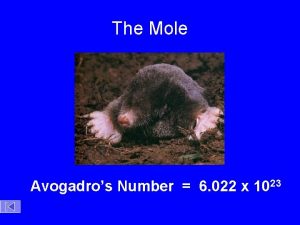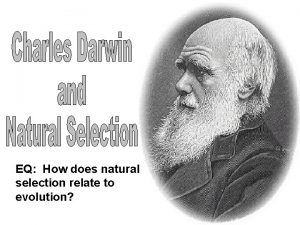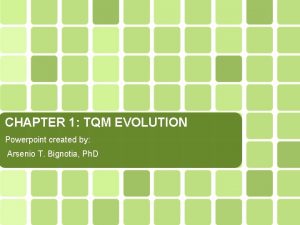MIT 3 022 Microstructural Evolution in Materials 4

















- Slides: 17

MIT 3. 022 Microstructural Evolution in Materials 4: Heat capacity Juejun (JJ) Hu hujuejun@mit. edu

Material Molar heat capacity cv (J/mol K) cv/R He 12. 5 1. 5 Ne 12. 5 1. 5 Ar 12. 5 1. 5 H 2 20. 2 2. 43 O 2 20. 2 2. 43 N 2 19. 9 2. 39 H 2 S 26. 7 3. 22 CO 2 28. 5 3. 43 H 2 O (100 °C) 28. 0 3. 37 Arsenic 24. 6 2. 96 Diamond 6. 1 0. 74 Antimony 25. 2 3. 03 Copper 24. 5 2. 95 Silver 24. 9 3. 00 Mercury 28. 0 3. 36 H 2 O 75. 3 9. 06 Gasoline 229 27. 6 Degrees of freedom Type Gas Monatomic gas 3 translational Total 3 Diatomic gas 3 translational 2 rotational Total 5 Triatomic gas Depends on molecular geometry Atomic solid 3 translational 3 vibrational Total 6 Liquid ? Nonmetal Metal Liquid The values are quoted for 25 °C and 1 atm pressure for gases unless otherwise noted

Molar heat capacity modeling n Molar heat capacity: for condensed matter n Deriving heat capacity: ¨ Determine system energy levels ¨ Derive partition function Z ¨ Calculate mean energy as a function of temperature ¨ Calculate heat capacity by taking derivative with respect to T Unregistered user at uncyclopedia. wikia. com; CC-BY-SA-NC 3. 0 This mole has a large molar heat capacity

Non-interacting, distinguishable particles n Consider a system consisting of N identical but distinguishable particles ¨ n Classical ideal gas The system’s partition function is the product of individual particle’s partition function

Non-interacting, indistinguishable particles n Consider a system consisting of N indistinguishable particles ¨ Quantum ideal gas (with wave function overlap) n Permutation does not generate new states n The system’s partition function The N! factor avoids over counting of microscopic states due to permutation

Monatomic gas n Only consider translational degrees of freedom n Particle in a box model: n Particle partition function for translational motion along the x-direction

Monatomic gas (cont’d) n Particle partition function for translational motion n Partition function of the system consisting of N ideal gas particles n Average energy of the system Distinguishability does not affect average energy

Monatomic gas (cont’d) n Molar heat capacity at constant volume n Each translational degree of freedom contributes average energy (energy equipartition) Material Molar heat capacity cv (J/mol K) cv/R He 12. 5 1. 5 Ne 12. 5 1. 5 Ar 12. 5 1. 5

Heat capacity of an atomic solid Harmonic oscillator model ¨ Potential function ¨ Spring constant ¨ Oscillator angular frequency poten tial Each atom oscillates in its own potential well independent of other atoms harm onic ¨ Energy n x A B C

Heat capacity of a harmonic oscillator n Energy: n Partition function: n Mean energy: n Heat capacity: Neglect zero point energy

Heat capacity of a harmonic oscillator n High T limit n Low T limit

Heat capacity of a 3 -D atomic solid n Partition function: Distinguishable atoms oscillating along x, y, and z directions n Mean energy: n Heat capacity: High T limit (Dulong-Petit law) Low T limit

Normal modes (lattice waves) Lattice waves can be decomposed to different normal modes: Fourier analysis Normal modes of lattice wave: in analogy to “particle-in-a-box”

Everything you need to know about heat capacity n Partition function of systems composed of distinguishable and indistinguishable particles n Distinguishability does not affect average energy and heat capacity; however, it changes entropy and Z n Heat capacity of monatomic gas: energy equipartition n Heat capacity of harmonic oscillators n Heat capacity of atomic solids: the Einstein model

List of symbols n T – temperature n k – Boltzmann constant (1. 38 × 10 -23 m 2 kg s-2 K-1) n R – Ideal gas constant (8. 314 J mol-1 K-1) n b – defined as b = 1/k. T n c. V / c. P – molar heat capacity at constant volume / pressure n CV – heat capacity of a system (e. g. an oscillator) N – average energy of a system n N – Total number of particles in a system n NA – Avogadro constant

List of symbols n Zpar / Zsys – (canonical) partition function of an individual particle / a system consisting of N particles n Epar / Esys – energy of an individual particle / a system consisting of N particles n n – quantum number (subscript x, y, or z denotes the direction) n L – linear dimension of the system (subscript x, y, or z denotes the direction) n h – Planck constant (6. 626 × 10− 34 J·s) n ħ – reduced Planck constant (1. 056 × 10− 34 J·s) n m – mass of particle

List of symbols n j (x) – potential function of a harmonic oscillator n K – spring constant of a harmonic oscillator n w – angular frequency of a harmonic oscillator
 6 022 x 10^23
6 022 x 10^23 Discriminantes putativas
Discriminantes putativas Dizabilitate locomotorie
Dizabilitate locomotorie Direct materials budget with multiple materials
Direct materials budget with multiple materials 5 useful materials
5 useful materials Natural man made
Natural man made Adopting and adapting teaching materials
Adopting and adapting teaching materials Natural materials and man made materials
Natural materials and man made materials Evolution of nursing
Evolution of nursing Evolution of hadoop
Evolution of hadoop Evolution
Evolution Evolution of quality management system
Evolution of quality management system Primate evolution tree
Primate evolution tree Why are populations the smallest unit of evolution
Why are populations the smallest unit of evolution Bird beak lab answer key
Bird beak lab answer key Natural hybridization and evolution
Natural hybridization and evolution Lesson 5 invertebrate evolution and diversity 2
Lesson 5 invertebrate evolution and diversity 2 Juran trilogy ppt
Juran trilogy ppt

































